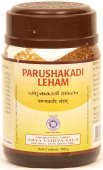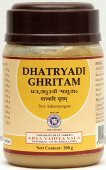Ikshu, Ikṣu, Iksu: 28 definitions
Introduction:
Ikshu means something in Hinduism, Sanskrit, Marathi, biology. If you want to know the exact meaning, history, etymology or English translation of this term then check out the descriptions on this page. Add your comment or reference to a book if you want to contribute to this summary article.
The Sanskrit term Ikṣu can be transliterated into English as Iksu or Ikshu, using the IAST transliteration scheme (?).
In Hinduism
Natyashastra (theatrics and dramaturgy)
Source: archive.org: The mirror of gesture (abhinaya-darpana)One of the Hands of the Seven Oceans.—Ikṣu: the Alapadma hands moved upwards and downwards (vyāvṛttacāpaveṣṭitau). Note: Representing the up and down motion of waves.
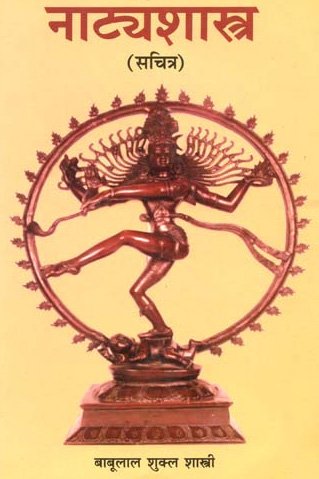
Natyashastra (नाट्यशास्त्र, nāṭyaśāstra) refers to both the ancient Indian tradition (shastra) of performing arts, (natya—theatrics, drama, dance, music), as well as the name of a Sanskrit work dealing with these subjects. It also teaches the rules for composing Dramatic plays (nataka), construction and performance of Theater, and Poetic works (kavya).
Ayurveda (science of life)
Cikitsa (natural therapy and treatment for medical conditions)
Source: Wisdom Library: Ayurveda: CikitsaIkṣu (इक्षु) is a Sanskrit word referring to Saccharum officinarum, a species of grass from the Poaceae (or, Gramineae) family of flowering plants. It is also known as Puṇḍraka. In English, it is known as the “sugarcane” or the “noble cane”. It is used throughout Ayurvedic literature such as the Caraka-saṃhitā. It is a tall perennial grass growing up to 6 meters in height. It has a solid juicy stem with leaves up to 150cm long that are inflorescence pink or white. It is extensively cultivated throughout India.
This plant (Ikṣu) is also mentioned as a medicine used for the treatment of all major fevers (jvara), as described in the Jvaracikitsā (or “the treatment of fever”) which forms the first chapter of the Sanskrit work called Mādhavacikitsā.
Dietetics and Culinary Art (such as household cooking)
Source: Shodhganga: Dietetics and culinary art in ancient and medieval IndiaIkṣu (इक्षु) refers to the “sugarcane”, according to the Atharvaveda I.34.5, and is commonly found in literature dealing with the topics of dietetics and culinary art, also known as Pākaśāstra or Pākakalā.—Chewing of sugarcane (ikṣu) is referred to in Atharvaveda. Pāṇini mentions the plantations of sugar cane. Kauṭilya mentions of some products of sugarcane such as phāṇita (inspissated juice of sugarcane), guḍa (jaggery), khaṇḍa (raw sugar), matsyaṇḍikā (sugar candy) and śarkarā (sugar). [...] Suśrutasaṃhitā identified different varieties of sugarcane. Caraka and Suśruta are of the opinion that the juice of sugarcane extracted by a machine is not good.
Ikṣu or “sugercane juice” is described in the Bhojanakutūhala (dravyaguṇāguṇa-kathana).—The properties and varieties of sugarcane are discussed in the ikṣu-prakaraṇa. The properties of sugarcane which is crushed with teeth and crushed in a huge machine are also explained in detail. Different products made out of sugarcane juice and their properties are also discussed. It include the properties of guḍa (jaggery), sitaśarkarā (white sugar), sitakhaṇḍa (candied sugar), yāsaśarkara, phāṇita, matsyaṇḍī, madhuśarkara, guḍaśarkara, tavarāja-śarkara and siddhikhaṇḍa-śarkara (different varieties of jaggery).
In the Ikṣu or “sugarcane products” group of foodstuffs, the following substances are beneficial (hita) to the body: Sitā (sugar). The following substances are harmful (ahita) to the body: Phāṇita (a variety of jaggery).
Kalpa (Formulas, Drug prescriptions and other Medicinal preparations)
Source: Shodhganga: Edition translation and critical study of yogasarasamgrahaIkṣu (इक्षु) refers to the medicinal plant known as “Saccarum officinarum Linn.” and is dealt with in the 15th-century Yogasārasaṅgraha (Yogasara-saṅgraha) by Vāsudeva: an unpublished Keralite work representing an Ayurvedic compendium of medicinal recipes. The Yogasārasaṃgraha [mentioning ikṣu] deals with entire recipes in the route of administration, and thus deals with the knowledge of pharmacy (bhaiṣajya-kalpanā) which is a branch of pharmacology (dravyaguṇa).
Toxicology (Study and Treatment of poison)
Source: Shodhganga: Kasyapa Samhita—Text on Visha ChikitsaIkṣu (इक्षु) or “sugarcane juice” is the name of an ingredient used in the treatment (cikitsā) of immobile or plant poison (sthāvaraviṣa), according to the Kāśyapa Saṃhitā: an ancient Sanskrit text from the Pāñcarātra tradition dealing with both Tantra and Viṣacikitsā—an important topic from Āyurveda which deals with the study of Toxicology (Viṣavidyā or Sarpavidyā).—Sage Kāśyapa recommends potent drugs to treat sthāvara or plant-poison. According to the Kāśyapasaṃhitā (8.27), “Asafoetida and sugarcane juice (ikṣu), applied on the thighs and all the limbs of the body can also remove poison. Being a combination of drugs which are anti-bacterial, refrigerants and febrifuge, this drug is a sure-fire queller of poison”.
Unclassified Ayurveda definitions
Source: archive.org: Nilamata Purana: a cultural and literary study (ayurveda)Ikṣu (इक्षु, “sugar”).—Sanskrit writers refer to a number of varieties of sugar, namely, Ikṣurasa (sugarcane juice), Phāṇit (sugarcane juice boiled down to one fourth), Guḍa (treacle), Matsyaṇḍikā (sugarcane juice boiled down to a solid consistence but exuding a little fluid on drawing), Khaṇḍa (candied white sand like grain), Śarkarā (white sugar), Sitopala (sugarcandy), Gauḍī (fermented liquor obtained from treacle), Sīdhu (fermented liquor obtained from sugarcane juice) and other two varieties of the above.
Source: archive.org: Vagbhata’s Ashtanga Hridaya Samhita (first 5 chapters)Ikṣu (इक्षु) refers to “sugarcane juice” according to the last verse 3.12 and 5.42-43 of the Aṣṭāṅgahṛdayasaṃhitā (Sūtrasthāna) by Vāgbhaṭa.— Accordingly (verse 5.42-43), “[...] Sugarcane juice [viz., ikṣu] (is) heavy, oily, nutritious, productive of phlegm and urine, viriligenic, cooling, destructive of hemorrhage, of sweet digestion and taste, (and) purgative. That at the top (is) slightly salt (and, if) pressed out with the teeth, sugar-like”.
Source: eJournal of Indian Medicine: Jajjaṭa’s Nirantarapadavyākhyā and Other Commentaries on the CarakasaṃhitāIkṣu (इक्षु) refers to Saccharum officinarum Linn., (“sugar cane”) and is the name of a medicinal plant mentioned in the 7th-century Nirantarapadavyākhyā by Jejjaṭa (or Jajjaṭa): one of the earliest extant and, therefore, one of the most important commentaries on the Carakasaṃhitā.—(Cf. Indian Medicinal Plants 5:31, Arya Vaidya Sala, 1993-96.).—(Cf. Glossary of Vegetable Drugs in Bṛhattrayī 40-41, Singh and Chunekar, 1999).

Āyurveda (आयुर्वेद, ayurveda) is a branch of Indian science dealing with medicine, herbalism, taxology, anatomy, surgery, alchemy and related topics. Traditional practice of Āyurveda in ancient India dates back to at least the first millenium BC. Literature is commonly written in Sanskrit using various poetic metres.
Purana and Itihasa (epic history)
Source: archive.org: Nilamata Purana: a cultural and literary studyIkṣu (इक्षु) refers to “sugar”, forming part of a common diet in ancient Kashmir (Kaśmīra) as mentioned in the Nīlamatapurāṇa.—Of the varieties of Ikṣu Nīlamata mentions only Guḍa and Śarkarā. Grains covered with treacle and ice mixed with white sugar are referred to (verses 494, 708). Most of the references to the articles of diet occur in the Nīlamata in connection with the offerings made to the gods but it is not difficult to infer from them the food and drink of the common people because “what a man eats his gods eat”.
Source: Cologne Digital Sanskrit Dictionaries: The Purana Index1a) Ikṣu (इक्षु).—A tree peculiar to Harivarṣa.*
- * Brahmāṇḍa-purāṇa II. 17. 7.
1b) (kratu)—A river of Śākadvīpa, from the side of the Himalayas.*
- * Brahmāṇḍa-purāṇa II. 19. 96; Matsya-purāṇa 122. 32; Vāyu-purāṇa 49. 93; Viṣṇu-purāṇa II. 4. 65.
1c) One of the seven oceans; see ikṣurasodā.*
- * Brahmāṇḍa-purāṇa IV. 31. 18; Matsya-purāṇa 2. 34.
1d) A R. from the side of the Himālayas, in the Bhāratavarṣa.*
- * Matsya-purāṇa 114. 22; Vāyu-purāṇa 45. 96.
1e) A R. joining the Narmadā; very holy. A bath here makes one lord of a Devagaṇa.*
- * Matsya-purāṇa 191. 49-50.

The Purana (पुराण, purāṇas) refers to Sanskrit literature preserving ancient India’s vast cultural history, including historical legends, religious ceremonies, various arts and sciences. The eighteen mahapuranas total over 400,000 shlokas (metrical couplets) and date to at least several centuries BCE.
Kavya (poetry)
Source: archive.org: Naisadhacarita of SriharsaIkṣu (इक्षु) refers to “sugarcane”, and is mentioned in the Naiṣadha-carita 20.21. Nārāyaṇa mentions ikṣu as a variant [of indu] and explains it as some kind of bamboo. Cāṇḍūpaṇḍita takes ikṣu in its usual sense of “sugarcane”, but the reference to pearls makes it practically certain that the word here means “bamboo” as stated by Nārāyaṇa. There are frequent references to pearls being found in certain bamboos. Cf. Naiṣadha-carita 22.105. Cf. also Yogavāśiṣṭha (Sthitiprakaraṇa) 35.11 and 53.23.
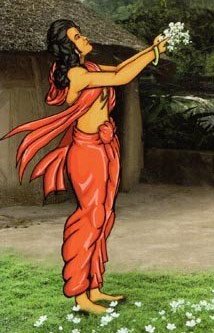
Kavya (काव्य, kavya) refers to Sanskrit poetry, a popular ancient Indian tradition of literature. There have been many Sanskrit poets over the ages, hailing from ancient India and beyond. This topic includes mahakavya, or ‘epic poetry’ and natya, or ‘dramatic poetry’.
Jyotisha (astronomy and astrology)
Source: Wisdom Library: Brihat Samhita by VarahamihiraIkṣu (इक्षु) refers to the “sugarcane”, according to the Bṛhatsaṃhitā (chapter 8), an encyclopedic Sanskrit work written by Varāhamihira mainly focusing on the science of ancient Indian astronomy astronomy (Jyotiṣa).—Accordingly, “When Jupiter (bṛhaspati) reappears at the beginning of the constellation of Dhaniṣṭhā in the month of Māgha, the first year of the cycle of 60 years of Jupiter known as Prabhava commences. [...] The next year is known as Vibhava the third as Śukla, the fourth as Pramoda, and the fifth as Prajāpati: in each of these years mankind will be happier than in the next preceding year. In the same four years there will be good growth of the Śālī crop, of sugarcane [i.e., ikṣu], of barley and other crops in the land; mankind will be freed from all fears and they will live at peace, in happiness and without the vices of the Kaliyuga”.
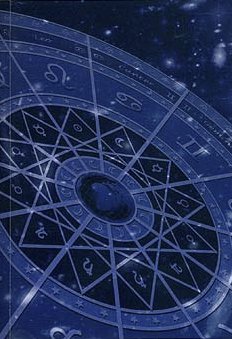
Jyotisha (ज्योतिष, jyotiṣa or jyotish) refers to ‘astronomy’ or “Vedic astrology” and represents the fifth of the six Vedangas (additional sciences to be studied along with the Vedas). Jyotisha concerns itself with the study and prediction of the movements of celestial bodies, in order to calculate the auspicious time for rituals and ceremonies.
Shaktism (Shakta philosophy)
Source: Brill: Śaivism and the Tantric Traditions (shaktism)Ikṣu (इक्षु) refers to a “sugarcane”, according to the King Vatsarāja’s Pūjāstuti called the Kāmasiddhistuti (also Vāmakeśvarīstuti), guiding one through the worship of the Goddess Nityā.—Accordingly, “[...] May the three-eyed goddess Bhagamālinī give the glory of good fortune. She possesses abundant miraculous power and is as lovely as the moon. She is stationed in the left corner [of the central triangle] and holds in the row of her arms a snare, a goad, a sugarcane (ikṣu), ropes, a book, and a sword. [...]”.

Shakta (शाक्त, śākta) or Shaktism (śāktism) represents a tradition of Hinduism where the Goddess (Devi) is revered and worshipped. Shakta literature includes a range of scriptures, including various Agamas and Tantras, although its roots may be traced back to the Vedas.
General definition (in Hinduism)
Source: Wisdom Library: HinduismSanskrit for 'sugar-cane'.
Biology (plants and animals)
Source: Wisdom Library: Local Names of Plants and DrugsIkshu [इक्षु] in the Sanskrit language is the name of a plant identified with Saccharum officinarum L. from the Poaceae (Grass) family. For the possible medicinal usage of ikshu, you can check this page for potential sources and references, although be aware that any some or none of the side-effects may not be mentioned here, wether they be harmful or beneficial to health.
Source: Google Books: CRC World Dictionary (Regional names)Ikshu in India is the name of a plant defined with Saccharum officinarum in various botanical sources. This page contains potential references in Ayurveda, modern medicine, and other folk traditions or local practices It has the synonym Saccharum obscurum Cuzent & Pancher ex Drake (among others).
Example references for further research on medicinal uses or toxicity (see latin names for full list):
· Berberides Americae Australis (1857)
· Acta Literaria Universitatis Hafniensis (1778)
· Caryologia (1984)
· Grasses of Burma (1960)
· Monographiae Phanerogamarum (1889)
· Adnotationes Botanicae (1829)
If you are looking for specific details regarding Ikshu, for example side effects, chemical composition, diet and recipes, health benefits, extract dosage, pregnancy safety, have a look at these references.

This sections includes definitions from the five kingdoms of living things: Animals, Plants, Fungi, Protists and Monera. It will include both the official binomial nomenclature (scientific names usually in Latin) as well as regional spellings and variants.
Languages of India and abroad
Marathi-English dictionary
Source: DDSA: The Molesworth Marathi and English Dictionaryikṣu (इक्षु).—m (S) Sugarcane, Arundo saccharifera.
Source: DDSA: The Aryabhusan school dictionary, Marathi-Englishikṣu (इक्षु) [-daṇḍa, -दंड].—m Sugar-cane. ikṣurasa mSugar- cane juice.
ई
Marathi is an Indo-European language having over 70 million native speakers people in (predominantly) Maharashtra India. Marathi, like many other Indo-Aryan languages, evolved from early forms of Prakrit, which itself is a subset of Sanskrit, one of the most ancient languages of the world.
Sanskrit dictionary
Source: DDSA: The practical Sanskrit-English dictionaryIkṣu (इक्षु).—[iṣyate'sau mādhuryāt, iṣ-ksu Uṇādi-sūtra 3.157]
1) Sugarcane; परि त्वा परितत्नुनेक्षुणागामविद्विषे (pari tvā paritatnunekṣuṇāgāmavidviṣe) Av.1.34.5.
2) Name of another tree कोफिला (kophilā).
3) Wish, desire.
Derivable forms: ikṣuḥ (इक्षुः).
Source: Cologne Digital Sanskrit Dictionaries: Shabda-Sagara Sanskrit-English DictionaryIkṣu (इक्षु).—m.
(-kṣuḥ) The sugar-cane. E. iṣ to desire, and ksu affix or īkṣ to see, asun affix and ī made short.
Source: Cologne Digital Sanskrit Dictionaries: Benfey Sanskrit-English DictionaryIkṣu (इक्षु).— (akin to iṣ), m. Sugar cane, [Mānavadharmaśāstra] 9, 39.
Source: Cologne Digital Sanskrit Dictionaries: Cappeller Sanskrit-English DictionaryIkṣu (इक्षु).—[masculine] sugar-cane; matī† [feminine] [Name] of a river.
Source: Cologne Digital Sanskrit Dictionaries: Monier-Williams Sanskrit-English Dictionary1) Ikṣu (इक्षु):—m. (√2. iṣ, [Uṇādi-sūtra iii, 157]), the sugar-cane, [Atharva-veda i, 34, 5; Kauśika-sūtra; Āśvalāyana-gṛhya-sūtra; Manu-smṛti] etc.
2) (twelve species of it are enumerated, [Suśruta])
3) the stem of the sugar-cane, [Manu-smṛti]
4) eyelash, [Vājasaneyi-saṃhitā; Taittirīya-saṃhitā] etc.
5) Name of a king, [Viṣṇu-purāṇa]
Source: Cologne Digital Sanskrit Dictionaries: Yates Sanskrit-English DictionaryIkṣu (इक्षु):—(kṣuḥ) 2. m. The sugar-cane.
Source: DDSA: Paia-sadda-mahannavo; a comprehensive Prakrit Hindi dictionary (S)Ikṣu (इक्षु) in the Sanskrit language is related to the Prakrit word: Ikkhu.
[Sanskrit to German]
Sanskrit, also spelled संस्कृतम् (saṃskṛtam), is an ancient language of India commonly seen as the grandmother of the Indo-European language family (even English!). Closely allied with Prakrit and Pali, Sanskrit is more exhaustive in both grammar and terms and has the most extensive collection of literature in the world, greatly surpassing its sister-languages Greek and Latin.
Kannada-English dictionary
Source: Alar: Kannada-English corpusIkṣu (ಇಕ್ಷು):—[noun] the tropical grass Saccharum officinarum of Poaceae family; sugar-cane plant.
Kannada is a Dravidian language (as opposed to the Indo-European language family) mainly spoken in the southwestern region of India.
See also (Relevant definitions)
Starts with (+70): Ikshu kaanda, Ikshubalika, Ikshubhakshika, Ikshubhakshita, Ikshubhakshiti, Ikshubhanjam, Ikshubhanjika, Ikshucapa, Ikshuchapa, Ikshuda, Ikshudanda, Ikshudarbha, Ikshudhanva, Ikshudimbha, Ikshudota, Ikshudvadashi, Ikshugamdhe, Ikshugandha, Ikshugandhaha, Ikshugandhika.
Ends with (+53): Ajighrikshu, Anikshu, Ashishlikshu, Bauddhabhikshu, Bhikshu, Brihadikshu, Caturdikshu, Cidananda bhikshu, Dahara-bhikshu, Deshyabhikshu, Didrikshu, Dikshu, Hasyadidrikshu, Jayatirthabhikshu, Jighrikshu, Jnanabhikshu, Jnanendra bhikshu, Kakekshu, Kamalakarabhikshu, Kandekshu.
Full-text (+123): Ikshurasa, Ikshudanda, Ikshuyoni, Ikshuvikara, Ikshushakina, Ikshumati, Ikshukanda, Ikshumehin, Ikshumeha, Ikshugandhika, Ikshutulya, Ikshubalika, Ikshumula, Ikshubhakshika, Ikshunetra, Ikshugandha, Ikshushakata, Anikshu, Kokilekshu, Kakekshu.
Relevant text
Search found 46 books and stories containing Ikshu, Ikṣu, Iksu; (plurals include: Ikshus, Ikṣus, Iksus). You can also click to the full overview containing English textual excerpts. Below are direct links for the most relevant articles:
Charaka Samhita (English translation) (by Shree Gulabkunverba Ayurvedic Society)
Chapter 27j - The class of Sugarcane (Ikshu) < [Sutrasthana (Sutra Sthana) — General Principles]
Garga Samhita (English) (by Danavir Goswami)
Verse 5.14.46 < [Chapter 14 - The Meeting of King Nanda and Uddhava]
Verse 5.6.31 < [Chapter 6 - Seeing Śrī Mathurā]
Verses 2.16.27-28 < [Chapter 16 - The Worship of Tulasī]
Manusmriti with the Commentary of Medhatithi (by Ganganatha Jha)
Verse 6.15 < [Section III - Details of the Hermit’s Life]
Chaitanya Bhagavata (by Bhumipati Dāsa)
Verse 3.4.467 < [Chapter 4 - Descriptions of Śrī Acyutānanda’s Pastimes and the Worship of Śrī Mādhavendra]
Verse 2.9.82 < [Chapter 9 - The Lord’s Twenty-One Hour Ecstasy and Descriptions of Śrīdhara and Other Devotees’ Characteristics]
Abhinaya-darpana (English) (by Ananda Coomaraswamy)
Rivers in Ancient India (study) (by Archana Sarma)
6. The river Narmadā in the Purāṇas < [Chapter 5 - Rivers in the Purāṇic Literature]
11. Descriptions of the rivers in the Jambudvīpa < [Chapter 5 - Rivers in the Purāṇic Literature]
3b. The Origin of Sarasvatī as a river < [Chapter 5 - Rivers in the Purāṇic Literature]
Related products
(+6 more products available)


